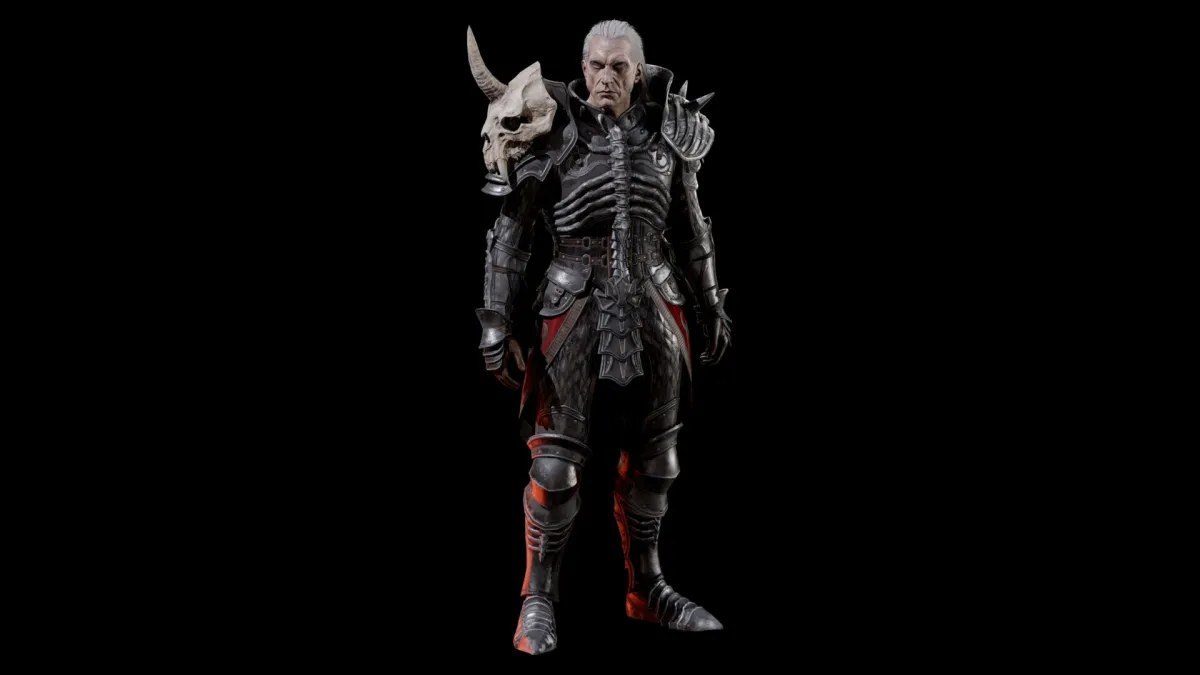Old games have a way of reminding us of a simpler time. A time where our most important decision in life was deciding whether to allocate that one skill point to Raise Skeleton or Skeleton Mastery for our latest Necromancer build. Some two decades later, I still don’t have an answer, and I rather like it that way.
Competitiveness has made the Sorceress the logical choice for all power gamers in Diablo II: Resurrected. However, another ancient force has led many players to walk the slower path of the Necromancer: nostalgia.
This article follows the format of the two previous ones in the series. Below, you will find our top 3 choices for Necromancer builds, a short description for each of the builds, and links to complete build guides for good measure. Once again, this list comes courtesy of PC Invasion’s sister site Icy Veins. Check out its build guides below, and check out the site for even more guides. Happy corpse exploding!
The Poison Necromancer
Enter the Poison Necromancer, sometimes known as Venomancer. This uncommon yet far from ineffective build has an unusual damage-over-time approach to Diablo II. Poison Nova, the build’s main skill, unleashes a screen-wide plague that slowly consumes the Necromancer’s enemies. Struggle as they may, poisoned enemies are then left to wither away by the Necromancer, who is free to safely kite back until their inevitable demise, where Corpse Explosion may see use.
Poison Nova is classically combined with the Lower Resist curse to further expose enemies to its toxic effects and even break poison immunities. Since Poison Necromancers require only 60 points to max out their poison-line synergies, they are free to invest fully into Lower Resist. This curse alone redeems them in party play, where poison damage loses its sting.
As with all poison-centric builds, the Poison Necromancer is a notoriously poor choice for farming bosses due to its middling single-target damage output. Indeed, this build will always be best suited for laying waste to large groups of enemies (notably Hell Bovines), owing to its impressive area of effect.
Spread horrible death with our Poison Necromancer build guide for Diablo II: Resurrected.
The Bone Necromancer
The Bone Necromancer, also known as the Bonemancer among other more explicit names, is the antithesis of the Poison Necromancer. Indeed, Bonemancers focus on raw, direct damage and prefer to use Bone Prison to hold enemies in place rather than move themselves to safety, for time spent moving is time not spent casting.
Bone Necromancers are notorious for their versatile magic-type damage, which is virtually never resisted by enemies throughout the game. Unlike many other synergy lines across the game, each of their mainline bone skills — Teeth, Bone Spear, and Bone Spirit — have their use. Teeth deals with hordes of weak enemies such as Fallen. Bone Spear is the most versatile, with its low mana cost and powerful piercing effect. Bone Spirit hits the hardest and can hardly be avoided, but affects only one target. Their curse of choice, if any, is Decrepify, which slows enemies down to a crawl.
Bonemancers have no notable weakness bar their relatively poor scaling, albeit only with extremely high-end gear.
Gravely injure your foes with our Bone Necromancer build guide for Diablo II: Resurrected.
The Summoner
Summonmancer, Skellymancer, Fishymancer, or simply, Summon Necro. The most iconic Necromancer build — and arguably, the most iconic build in Diablo II’s entire history — would go on to define what a Necromancer should be in many games released over the two decades since Diablo II’s launch.
In stark contrast to this rather illustrious introduction, the Summoner’s playstyle is elegant in its simplicity; summon skeletal minions, curse enemies, explode corpses. The backbone of the build’s classic army is known as Necroskeletons. These resilient melee warriors, raised from the corpses of your enemies, will carry the Summoner from level 1 through the very end of the game. Amplify Damage is the support curse of choice for its powerful physical resistance reduction effect, which helps both the Necroskeletons and the Necromancer’s own Corpse Explosion skill. Beyond these skills, Summoners are pretty much free to do as they please. Revive, Necromages, or the Golem of your choice are all valid options and will require little to no adaptation on your part.
As for weaknesses, Summon Necros are no different than other summon-centric builds. Act Bosses deal 300% more damage to summons, and so, may prove difficult until your gear is good enough.
Raise hell with our Summoner Necromancer build guide for Diablo II: Resurrected.
Stay tuned for our fourth article in this series, where we’ll be covering the best Amazon builds in Diablo II: Resurrected.







Published: Oct 13, 2021 10:30 am